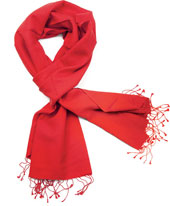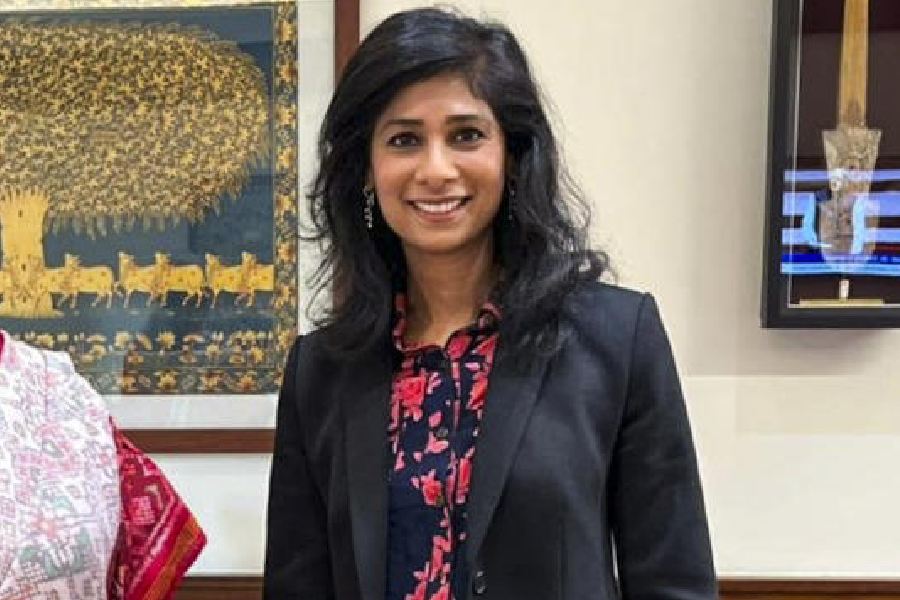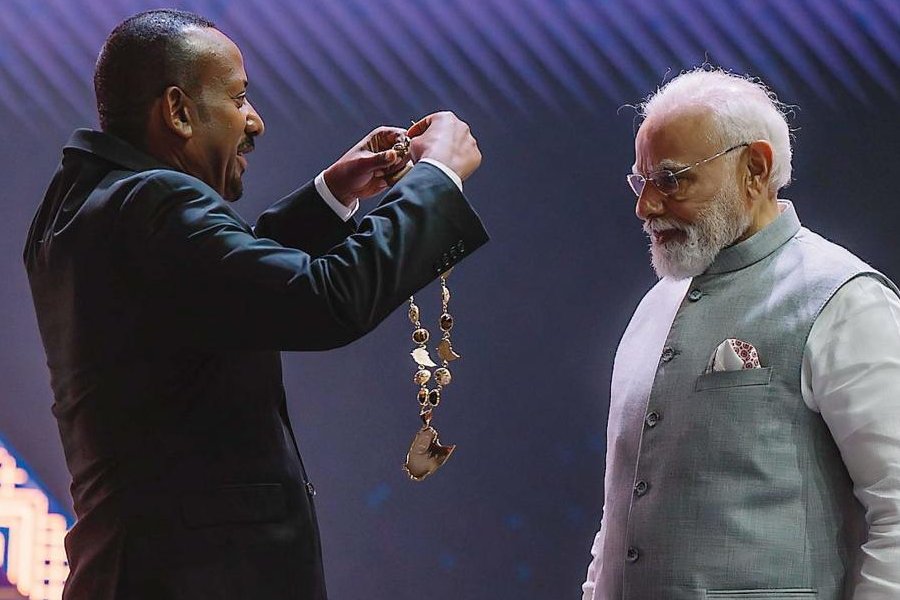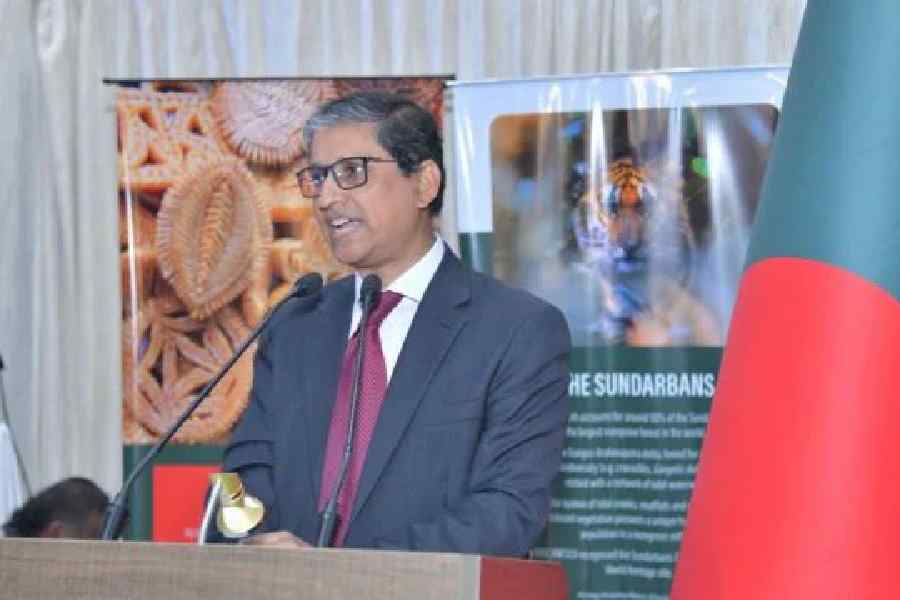 |
| THINKSTOCK |
It is day two of curfew in downtown Srinagar. Small piles of broken bricks and stones gather in witness to clashes between locals and security forces.
Against the violence on the streets, the colourful shawl that is still attached to Shakeel Ahmed Hakak’s hand-held wooden loom stands out like a rose in a thorny bush. The weaver believes that the shawl, embroidered with flowers and chinar leaves, would be worth Rs 35,000 in a Delhi market.
In 2008, India’s Geographical Indications registry, which has 178 traditional goods on its list — from Goa’s feni to Kerala’s mundu — gave Kashmir intellectual property rights to pashmina. But pashmina today is as much the pride of Kashmir as it is its shame. The beautiful shawls are veritable works of art. Some, however, are fakes.
To qualify as a real pashmina, a garment has to be handwoven, using the under fleece — silky tufts of hair less than 14 microns thick (1 micron = 0.001mm) — of the Capra hircus goat. The delicate-faced animal with a shaggy coat of coarse guard hair and long scaly horns twisted like dried leaves is found in the upper reaches of Tibet and Ladakh and produces the fine wool called pashm. The pashmina shawl is made of that — and can cost anything between a few thousand and several lakh rupees, depending on the size and workmanship.
Shariq Farooqui, director, Srinagar’s Craft Development Institute, stresses that 80-90 per cent of the pashmina industry runs on powerlooms today. Indeed, a few winding lanes down in Hawal, a noisy powerloom slaps together startlingly white yarn and rolls out glossy “semi-pashmina” in a shed.
 |
| The yarn tale: Zehra Hakim at work. Pictures by Reena Martins |
“The finish is better than that in the handloom ones,” says Firdaus Ahmed, the unit’s owner. “A customer could easily be fooled into thinking this to be a hand-woven pashmina.” His silk and nylon mixed yarn comes from Amritsar and Ludhiana.
Pashmina is intrinsically fragile. To withstand the jerks of the powerloom, it is commonly mixed with nylon. The woven fabric is then treated with diluted hydrochloric acid to dissolve the nylon, says Yasir Khan, whose Acme Fine Shawls sits at the far end of an industrial estate in downtown Srinagar.
With a fake pashmina trade flourishing in and outside the country, efforts are now on to help buyers distinguish between the real stuff and the counterfeit. Some reports say that from April, real pashmina will carry a chip that will endorse its genuineness. Each garment will carry a unique identity number which will be stored on a central database.
But Farooqui is not very sure if the process will be ready for implementation by April. “We have yet to procure the labels. The rest of the procedure will take about a month,” he says.
Kashmiris are concerned because in recent years Punjab has been trying to wrest the pashmina crown from Kashmir. “Nowadays, 90 per cent of pashmina sales go to Punjab and only 10 per cent to Kashmir,” holds Samir Bhat, sales executive at Shaw Art Palace, a handicraft export firm.
 |
| REALITY SHOW: Pure (left) and fake pashmina; (below) a bowl of pashm |
The problem is not restricted to Punjab. When sacks of pashm, washed and separated from coarse guard hair arrive in Srinagar, hardly anybody can tell if it is high quality stuff from Ladakh or the cheaper grade from China, Mongolia or Nepal, says Imran Rashid, a retailer-cum-manufacturer who sources his pashmina from Changthang in Ladakh. “Only when a weaver begins weaving does he get to know the quality of the yarn.”
China is said to have an annual 7,000 tonne turnover of pashmina, which Bhat says is a lot cheaper than the Kashmiri variety, but is being lapped up by European labels on the lookout for cheap stuff. “They want stoles that they can price at 20-30 euros,” says Rauf Ahmed, a handicraft exporter in Srinagar. A retailer in Europe would sell a genuine pashmina stole for 200-250 euros and a shawl for 300-350 euros, says Rashid.
It’s difficult to discern the genuine from the fake, adds Bhat. The adulterants include cotton, silk, viscose, finer wools like merino and angora, even rabbit or cat hair.
At a state-run Kashmir handicrafts store showroom in Mumbai, the salesperson whips out his lighter and burns the tip of a tassle of a shawl labelled “Pashmina”. The tip turns hard. “It is mixed with viscose,” he declares.
“Pure pashmina melts in the hand and is extremely warm,” stresses Monisha Ahmed, author of Living Fabric: Weaving among the Nomads of Ladakh Himalaya. But Farooqui, who was instrumental in getting pashmina its GI status, says it’s not so simple. “Touch and feel is an unreliable test,” he insists.
Even the so-called ring test — passing a shawl through a ring — is not a cinch. Altaf Salama, a handicraft shop owner in Srinagar’s Lal Chowk, forces a plain “pure pashmina” shawl (priced at Rs 5,500) through his ring. Writer Ahmed, however, says it holds no water because some pashmina shawls, especially Ladakhi ones, are thicker. “Until a couple of centuries ago, even Kashmiris wove their pashminas thicker,” she adds.
It takes 200-225g of pashm to weave a shawl and a healthy goat will produce that much. “Good quality fibres measure 30-55mm,” says A.K. Samanta, a scientist at the Wool Research Association in Thane, who is designing equipment to measure the length of a pashm fibre.
A large batch of this year’s pashm stocks from Changthang will be from the 22,000 goats that starved to death this winter because of heavy snowfall which blocked the roads and access to fodder.
Far away from the controversy over precious pashmina, a trio of embroiderers in flowing woollen pherans sits hunched over yards of dark shawls which they decorate with traditional rose and paisley motifs, occasionally dipping into a breadbasket of brightly coloured silky thread, and covering embroidered portions as they go along.
 |
At the end of an eight-hour shift — marked with dry cake and kehawa — each one earns Rs 80-250 for a hard day’s job. They could make Rs 7,000 to Rs 1 lakh for an intricately embroidered shawl which they get to embellish only after proving themselves on wool, says the production unit owner, Tanvir Ahmed, caressing an embroidered stole.
In the adjacent room, Zehra Hakim, in a gold-bordered jade pheran, blue socks and beige headscarf, spins yarn from a cottony ball of pashm, placed in the hollow of an earthen pot. But the reverence accorded to the precious fleece does not correspond to the money she earns.
A 12-inch hank of pashmina yarn, each split into nine wispy threads, fetches her one rupee. It takes her two days of back-breaking labour to earn Rs 100. “A spinner can earn Rs 200 from spinning 10g of pashm,” says Ghulam Nabi Palloo, a pashmina shawl merchant.
A weaver is a bit better off. “I earn Rs 1,700 to weave a simple shawl in six days, Rs 9,000 for a bordered Kani shawl that takes two months, and Rs 40,000 for a fully embroidered Kani shawl that takes five to six months (together with another weaver),” says Aijaz Ahmed Shah, a weaver in Kashmir’s Gandherbal district.
Once the new technology is put into place, perhaps the lives of weavers will change. But as the fakes continue to flourish, the real pashmina is as endangered as the goat.










